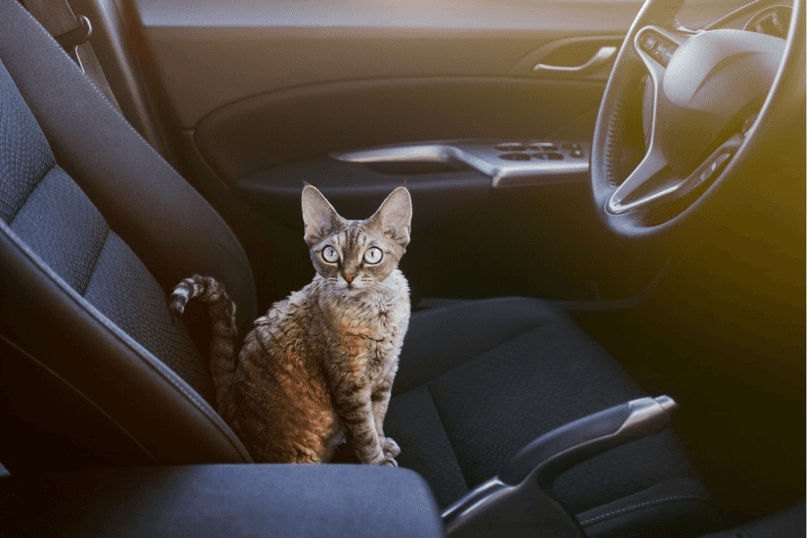
Travel season is around the bend, and for many pet parents, that means it’s time to hit the road with their whiskered co-pilots. Whether you’ve recently added a purring member to your crew or you’re an experienced cat chauffeur, journeys with your cat can turn into stories worth purring about. But let’s be real – it can also be a chaotic ride if you’re not prepared for a cat scratch – or two.
In this guide, we’ll whisk you away through the ins and outs of cat travel. From gearing up for the excursion to ensuring your cat’s comfort and safety, we’ve got you covered for every trip – be it a sun-soaked vacation or a leap to a new abode.
Preparing for Road Trips with Cats
Traveling with a cat is not just about packing a bag and setting off. It requires careful planning to ensure your cat’s ride is smooth sailing.
- Choosing the Right Carrier: This is your cat’s travel throne. Make sure it’s roomy, comfy, and escape-proof. After all, no one wants an impromptu game of hide-and-seek at 60 mph.
- Creating a Familiar Environment: Cats are sticklers for routine and love their familiar smells. A blanket or a shirt that smells like home can turn their carrier into a snuggly retreat.
- Stable Placement: Keep the carrier steady. Cats, like us, don’t appreciate surfing inside the car.
- Securing the Carrier: Fasten it down. An untethered carrier is a roller coaster ride no cat signed up for.
- Hydration and Feeding: Schedule sippy breaks for some fresh H20. Cats need to stay hydrated, but we suggest you skip the full meal to avoid tummy troubles.
- Comfort Stops: Plan for potty pauses. Long drive? A portable litter tray can be a life saver.
Moving with Your Cat
Switching spaces with your cat in tow? Here’s how to keep their stress in the rearview mirror:
- Updated Identification: New digs, updated tags. Make sure your cat’s ID is as current as your playlist.
- Research Pet-Friendly Accommodations: If your journey spans a day or more, scout out cozy, cat-welcoming pit stops in advance.
- Creating a Safe Space: Once you land, set up a kitty haven with all their favorite things. It’s like cat glamping.
Visiting the Vet
Even short vet visits can be less fur-raising with these tricks up your sleeve:
- Advance Prep: Get that paperwork sorted ahead of time. It’s like packing your cat’s suitcase.
- Soothing Sounds and Scents: Calming tunes or aromas can turn the car into a zen zone.
- Chill Pills for Anxious Felines: Got a jittery traveler? A chat with your vet for some kitty calmatives might do the trick.
Safety Tips for Traveling with Cats
Remember, your cat’s safety is the golden ticket to adventure. They may have nine lives, but why take chances?
- No Hot Car Lounging: A parked car can turn into a dangerous sauna quick. It’s a no-go for kitty hangouts. Don’t play around when your cat’s health is on the line.
- Carrier Cruising Only: Free-roaming felines in the car? That’s a furry faux pas. Keep them snug in their carrier.
- Car Familiarization: Before the big day, let your cat explore the car. Think of it as a kitty dress rehearsal.
Hitting the road with your cat can be a wonderful experience with the right preparation and mindset. By following these tips, you can ensure a safe, enjoyable, and most importantly, fun journey for both you and your adventure cat.
Every cat is a unique traveler, with their own set of likes, dislikes, and travel playlist preferences. Tailoring your trip to their personality ensures you both enjoy the ride. So, buckle up, and happy cat-tripping!
Author’s Note: For the nitty-gritty on cat travel, or if your cat is a special case, always touch base with your vet. They’re the go-to for advice that’s spot-on for your cat’s health and quirks.